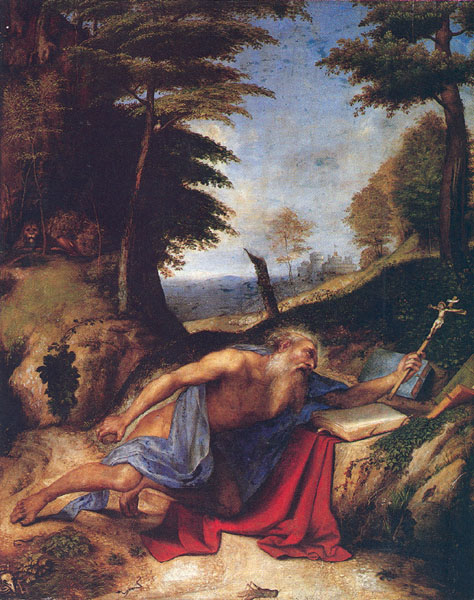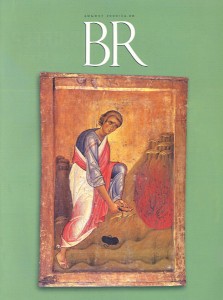
Historians tend to remember St. Jerome (c. 342–420) for his many contributions to biblical scholarship, chief among them the Vulgate, his profoundly influential Latin translation of the Bible. But in this painting, Renaissance artist Lorenzo Lotto (c. 1480–1556) focuses on a different aspect of Jerome’s complex personality. The scholar’s books are there, yes—but rather than depicting a dispassionate academic, Lotto conveys the spiritual fervor of a man whose intellectual interests were matched by his commitment to ascetic ideals.
Never fully at home among the comforts of civilization, Jerome spent several years of his life as a hermit in the Syrian wilderness. There he fasted and practiced other austerities, even though, by his own admission, he continued to wrestle with worldly desires.
It is the remorse Jerome felt for entertaining these desires that Lotto attempts to capture in the painting. Bent sorrowfully before the crucifix in his left hand, Jerome grips in his right hand the emblem of his penitence—a stone that he uses to beat his chest. The saint’s inner conflict is further intensified by the images of danger and decay around him. Poisonous snakes slither on the ground near his feet, where one can also see, in the lower left corner of the picture, the skeleton of a bird. The towers in the distance represent civilization and its enticements, while, closer in, the lion that looks at the saint almost sympathetically is part of hagiographic legend: The lion is said to have become Jerome’s loyal companion after he removed a thorn from its paw.
Already a library member? Log in here.
Institution user? Log in with your IP address.

